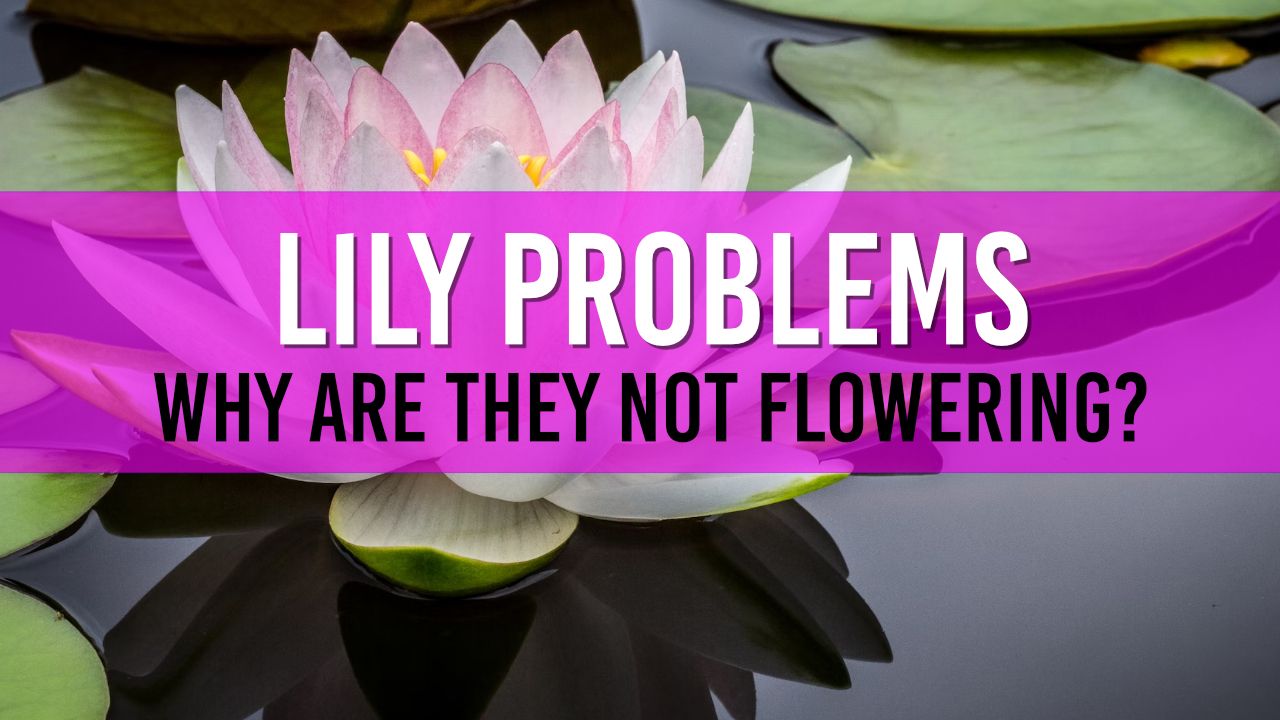Why my Pond Lilies are not flowering and dying my ultimate guide
If your Pond Lilies are not flowering this may be due to a lack of sunlight, poor water quality/conditions, incorrect planting depth or your aquatic compost may need replacing.

Table of Contents
Pond Lilies are one of the most popular plants for any garden pond. Their large round lily leaves sit on the surface of the water with absolutely stunning flowers in an array of colours. However, many owners often wonder why their pond lilies are not flowering or have completely failed to produce lily leaves entirely.
Pond owners old and new will always choose lily plants for their ponds, and soon realise they are quite finicky when it comes to flowering season after season.
In this article I will go over some of reasons why your pond lilies do not have flowers, what you can do ensure your pond lilies have new buds, and what to consider when building a garden pond if you plan on adding lily plants in the future.
I will also cover the steps you can take to ensure your lilies begin to fully flower for the next season.

What are the main reasons your pond lilies are not flowering?
There are 4 main things to consider when researching why your pond lilies do not have flowers or no new buds forming.
- Lack of direct sunlight / hours of sunlight per day
- Poor water quality for lily growth
- Soil / Aquatic Compost (planting)
- Water movement
Following this guide you will ensure your pond lilies will perform to their greatest potential ensuring multiple flowers, buds and lily pads.
How many hours of sunlight do pond lilies need to look their best?
The average pond lily requires at least 4 to 6 hours of direct sunlight per day to successfully grow, bud and flower. Pond lilies that are situated in shady areas of your garden will often struggle to produce many lily pads or lily buds – and you will find their stems are weak and often snap.
The best time for direct sunlight is between mid morning and early evening. Ponds that have overhanging trees may need to be cut back to allow more sunlight to your lily plants.
If your pond does not receive the full 6 hours of sunlight, then you may need to choose specific breeds of pond lilies that better suited for shady areas as seen here.
With my own pond, we’re quite unlucky with the sun, and can only plant lilies in one corner of the pond.
Ponds that do not receive sun light between mid-morning and and early evening will definitely have problems with lilies having no new buds.
The Best Water Quality for Lily Growth
Like most plants, the environment in which they are planted affects their ability to grow, flow and re-flower. A lily is no different, however unlike normal plants you must also start to consider the water that the pond lily is bedded in.
Pond lilies require a fairly good quality water to help ensure feed their growth, so ponds that are heavily infiltrated with algae, nitrates and fish waste will eventually end up killing the lily roots and prevent any new buds or pads from growing.
Check your water using pond water test kits and to ensure the pond water is safe and suitable for plants. Even though most plants are able to filter nitrates from the water, too many and your pond lilys will not have any flowers or new shoots.
💡 During the early spring months, be sure to check your lily shoots and pads and remove any algae/blanket weed that has attached itself.
Will Aquatic Compost / Soil to stop your pond lilies dying?
As mentioned in article “Can I use normal soil instead of aquatic compost” – I talk about using normal soil instead of aquatic compost. For my own lily plants, I use normal ground soil, not only is it cheaper, but as it has not been treated with any harmful chemicals works really well.
Pond Lilies, like all plants require a good amount of soil for roots to absorb water and grow your buds, pads and flowers successfully. As your pond lilies grow so will their hard roots, ensuring your pond lilies
When purchasing new lily plants, they are often sold “pre-potted” and have quite small baskets that don’t really lend themselves for long term growth. If you pre-potted lilies are more than a year old it’s time to re-pot in larger baskets with more soil/aquatic compost with room for your lily roots to grow.
Does water movement stop my pond lilies from flowering?
There is a reason we don’t see water lilies in fast rivers or streams, pond lilies do not like fast flowing water and therefore placing your lily plants next to waterfalls & fountains will be unable to fully produce buds and flowers.
Fast flowing water will create a strong undercurrent making it difficult for lily pads to remain above the water surface line where they absorb the sunlight. Planting lily baskets directly under waterfalls will kill off your lilies faster than they can produce new lily pads, however this does not mean you can’t have lilies if you have a waterfall.
When planning your pond try and keep your pond lilies away from the waterfall by planting your plants at the opposite side of your pond. If you have a water fountain, depending on how much it agitates the water pond lilies can be placed nearby without hindering their growth.
Summary of why your pond lilies are not flowing
- The key to successful lilies comes down to the placement of your planters / baskets. Place them too close to running water and your lilies will not pad, bud or even flower. Choose a location that is further away from any overpowering currents will ensure that any pond lily pads are able to survive and absorb sunlight.
- Placing your pond lilies in areas that receives a high amount of sunlight (4-6 hours) will ensure your lilies are being supplied with enough “food” to produce the highly colourful flowers that every pond craves for their pond lilies.
- Your pond lilies should be potted in high quality soil / aquatic compost which will allow your lily roots the best chance to grow and supply new shoots.
- Water quality should be monitored using pond water test kits to ensure excessive nitrates are not present in your water. Algae and blanket weed should be remove from lily pads and shoots to allow sunlight to feed your pond lilies.


